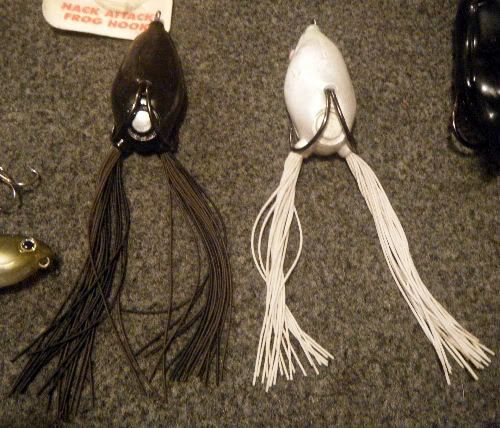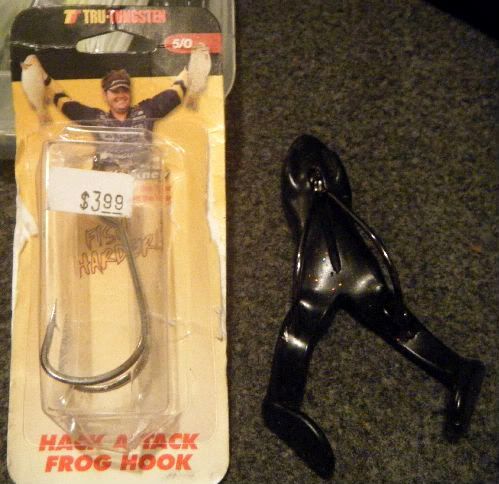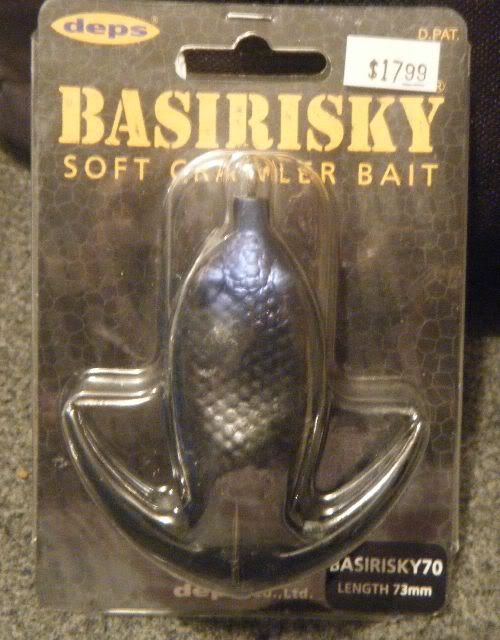In the last post, we covered the following topwaters... poppers and buzzbaits. There are definitely more variety of topwaters in today's world than when I fished tournaments back in the late 80's and 90's. Each one has it's endorsers, including bass pros, that perfect the techniques required to catch fish with them. In the last segment, I spoke about the skills that Zell Rowland acquired over his pro career using the popular Pop'R. Zell took it one step further by adapting the Pop'R to meet his needs. He is not only a pro angler, but also an innovator through on the water testing.
Of course not everyone can afford each and every topwater that is on the market. So, I would suggest that you closely evaluate the circumstances in which you fish most and pick and choose the topwater(s) that best meet your needs.
For example, if you are fishing over a lot of submerged grass or lily pads, you may want to consider the many different styles of frogs that have emerged over the years. Some are made quite well. The initial frogs that we used back in the 90's were not sealed and would take on water which means we would have to drain the lure often to get the best possible topwater effect. But there are frogs on today's market that seal out water and allow us to do more fishing and less correction of problem.
Here are a few of the frogs that I own and fish...

Dean Rojas has become well-known for his abilities to fish and catch big bass using topwater frogs. The above two frogs come from the Spro Dean Rojas Signature Series of frogs... "Bronzeye Frogs." The ones that are pictured are the 'Midnight Walker' and 'The Albino.'
As in many styles of baits, I use the darker model under overcast or nighttime fishing and the white frog is fished during daylight.
In general, frogs are shallow water lures. You can cast them in places that you would refuse to send any other lure. Pinpoint casting is required for much of your frog fishing. Once you make the cast, point the rod tip down and "walk" the frog back to the boat. You may need to clip some of the legs back to get a good walking action. That would be up to you to determine just how much length, if any, needs to be removed.
Here's another Frog that I own and have had great success with...

This frog is made by Stanley and is called the "Ribbit". I use Greg Hackney's 5/0 Tru-Tungsten Double Frog Hooks on this style lure. The eye of the hook goes through the nose of the plastic frog and the double hooks are evenly placed into each leg... hooks are always up!
I like to toss this in most places that I would toss the 'Broneye'. However, unlike the 'Bronzeye.' After I cast this lure, I reel immediately to get the frog moving. You should see the crazy attention-getting action that those "frog legs" make on the water. It's extremely hard for bass to resist. In fact, if I was a frog, I'd probably smack this lure because it looks so good.
My first experience with "The Ribbit" was on a local pond in my township. My wife and I took a couple of hours and headed to the pond to do some evening fishing. On the very first cast, I landed a beautiful largemouth. I was sold! "Ribbit, Ribbit!"
I still have a few frogs that I am looking forward to using. One is this nice looking Basirisky Soft Crawler Bait (See Below). It was a little steep in price at $17 and some change, but hopefully, I'll receive $17 worth of excitement from it.

We will continue the Topwater discussion on my next post.
Dad
...to be continued
